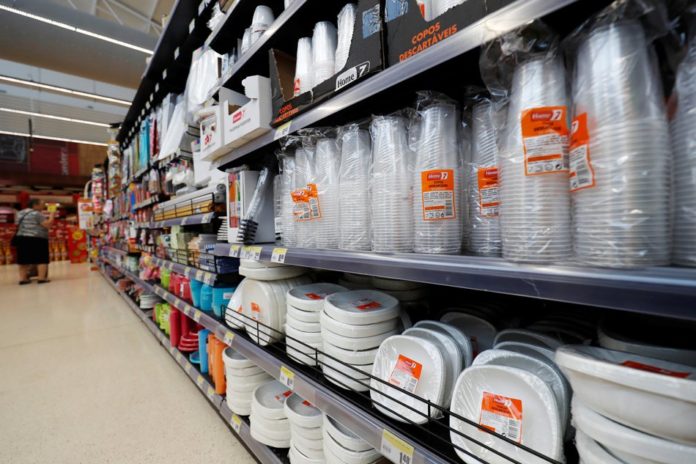PARIS, July 8, 2018 (BSS/AFP) – It’s the worst enemy of environmental
campaigners, but people around the world use mountains of plastic every day
and business is booming for manufacturers.
Much to the chagrin of activists, an increasingly restrictive regulatory
environment appears to have put little dent in the industry’s power so far.
That is changing, however, and plastic giants are starting to adapt.
From 2006 to 2016, global plastic output rose from 245 million to 348
million tonnes, according to the PlasticsEurope trade association. Production
rose by 3.9 percent in 2017. In 2016 the growth rate stood at 4.0 percent,
and in 2015 at 3.5 percent.
Demand for thermoplastics alone — which includes the most common kinds of
plastic, such as PET used in water bottles, polypropylene, polyethylene and
PVC — has soared by 4.7 percent yearly from 1990 to 2017.
“Is this going to continue in the coming years? We can assume it will,”
said Herve Millet, technical and regulatory affairs manager at
PlasticsEurope.
“The reasons why plastic (production is) growing worldwide are not just
going to go away all at once,” he added.
The growth of the plastics industry goes hand-in-hand with economic
development, Millet said.
The more an economy grows, the more plastic is used in construction,
infrastructural development, electrical and electronic industries, and
transport.
Single-use plastic packaging — the nemesis of environmental activists —
is also in strong demand in developing countries.
– China leads the pack –
Even in Europe, where anti-plastics campaigning has been especially
vigorous, packaging accounts for 40 percent of consumption.
But the world’s leading producer of plastic is China. Today it holds a
whopping 29 percent of the market share, up from 15 percent just a decade
ago.
European, US and Japanese plastic manufacturers have meanwhile seen their
market share shrink.
Where Western producers are doing especially well is in the development of
so-called specialty plastics used in the construction, automobile, medical
and other industries.
New polymers are also being used in the aviation and space industry, as
well as in the creation of specialty athletic footwear.
Pierre Gadrat, who heads the chemicals and materials division of France-
based consulting firm Alcimed, said this sector “is just as dynamic, if not
more, than before”.
The growth of the plastic industry defies concerted efforts from activists
around the world, as well as an increasingly hostile regulatory environment.
Under pressure from campaigners, the European Union, Britain, India and
even fast food giants like McDonald’s have all made some headway towards
bringing the use of disposable plastic straws to an end.
Plastic bags are also being phased out in countries around the world, while
France is set to introduce a ban on plastic plates, cups and cutlery in 2020.
– Growing stigma –
Emmanuel Guichard of French plastic packaging federation Elipso said the
drive to end the use of single-use plastic “does not weigh massively on
growth in the sector”.
However, “with all these regulatory measures coming into force, we can’t
imagine that they won’t have an impact at some stage”, he added.
As public awareness grows about the terrible harm plastic pollution causes
to the world’s oceans and seas, manufacturing giants are starting to worry
about their image.
“Plastic as a whole is becoming stigmatised,” Millet of PlasticsEurope
said.
In a bid to keep their names clean, plastic industry leaders are recycling
more, following the lead of product manufacturers.
“Under regulatory pressure, plastic waste could potentially become… less
seen as waste and more as a valuable raw material,” Gadrat said.
Producers of other raw materials such as metals, glass and cardboard have
already fully integrated waste into their production cycles.
“This is the future of plastic: a scenario where the industry manages its
raw materials and its recycled resources,” said Paris-based waste management
company Citeo’s chief scientist Carlos de Los Llanos.
“It will probably take a few years,” he said, adding: “It takes learning
how to do it.”



